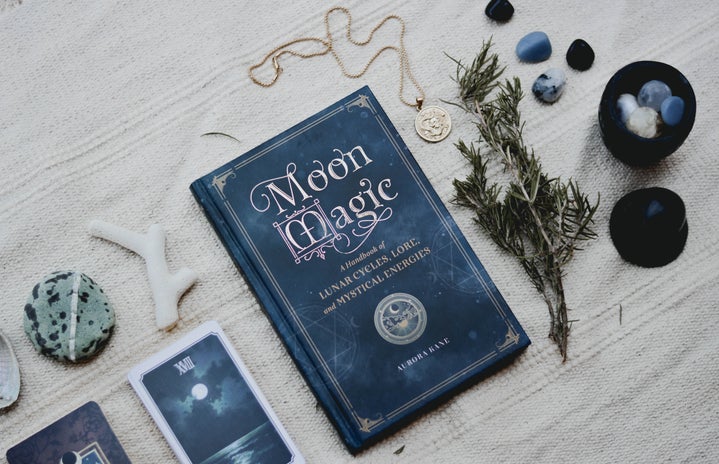So, you’re probably asking yourself, ‘Wait, witches actually exist?’ Yes, indeed they do. Although the media loves to depict witches in a negative light, saying that witchcraft is only ever employed to do harm, real modern day witches and witchcraft do not fit that description at all. By attributing these types of connotations to the word “witch” and “witchcraft”, the main purpose of witchcraft as we know it today is ignored and often misunderstood. Witches (which can be of any gender, age, sexuality and race) center their craft around using positive energy in order to manifest good things and help as many people as they can with their guidance.
Now, before we talk a bit about modern day witchcraft, let’s dive into the history of how witches came to be.
Background information on witchcraft
Ever since proper civilizations were made and people had acquired knowledge about nature, astronomy, and the spirit world, witches roamed the world practicing their craft. They were known mostly as the wise old people of the village, the healers, or the priests/priestesses. For example, in mayan culture, the priests were in charge of communicating with the gods through rituals, and interpreting the stars in order to share prophecies or predict a good harvest. Of course, they weren’t known as “witches” per sé, but their practices were really close to what we consider to be witchcraft nowadays.
It wasn’t until the mid 1400’s, with the rise of the Catholic Church, that the infamous witch hunts started. These so called “trials” would take mostly women accused of commiting witchcraft (with no proof that this claim was true) and they would torture them until they confessed their “crimes”. They would later be burned at the stake or hanged. These women were regarded as outcasts by their villages given that they were mostly single, widows, poor, or “healers”. These trials lasted until approximately the late 1600’s and took place in both Europe and America. Unfortunately, we still have some witch trials going on today in very conservative countries like Saudi Arabia and Papua New Guinea.
The reason why witchcraft was (and still is in some places) deemed evil is that it went against religious beliefs, and attributed some godly traits onto humans, specifically women, who were deemed inferior in those societies. People also thought that they gained their power as a reward for taking part in sexual practices with the devil. Basically, they thought witches and their craft were sinful, which is obviously not true. There was even a book published on how to identify witches called “Malleus Maleficarum”.
https://www.instagram.com/p/CUTKesQLtqL/?utm_source=ig_web_copy_link
Wicca: A religion for witches
Witchcraft as a religion, aka Wicca, started out in England around the 1950’s and it is still practiced to this day. It was founded by Gerald Brousseau Gardner, who had previously spent some time overseas learning all he could about different occult practices and beliefs. Alas, he incorporated all of this knowledge into a religion that focused on nature, spirituality and practicing “magick”. Wiccans usually gather in covens, and their rituals involve making offerings for deities so that in return they can manifest their or other people’s desires. They do have a supreme goddess, though. She’s usually represented by the high priestess of the coven, although some allow a high priest to also lead alongside the priestess, representing the “horned god”. Also, their main celebrations are centered around astronomy (full moon, new moon and summer solstice) and spirituality (Samhain).
And, if you were wondering what book they read instead of the Bible, they read what is called the Book of Shadows. This book is filled with religious texts and step by step rituals and recipes for spells. Although there are old copies of past books of shadows, it is acceptable for witches to write their own book if they prefer to establish their own set of rituals and practices.
Different types of witches
Now that we have covered the basics about what Wicca is, it’s also important to mention how not all witches are the same or have the same practices. Some prefer to work in the kitchen, while others prefer to work alone, and so on, and so forth. Here are a few examples of different types of witches:
- Witches that practice in a coven: These kinds of witches are what we usually see in widespread media (meaning, the concept that witches work in groups of three and that they rarely ever work alone etc.). They gather together in a coven and abide by a certain set of rules set forth by the high priest or high priestess, which are the leaders of the coven.
- Witches that practice crystal witchcraft: These witches use different types of crystals in order to bring forth many manifestations.They know everything about what goes into the care of crystals and they mostly create crystal grids.
- Solo Witches: These witches are basically the opposite of witches that gather in covens. They “dance to the beat of their own drum” and create their own interpretation of what witchcraft is.
- Green Witches: No, I’m not talking about the green old hags you see in movies. Green witches are simply witches that use nature and it’s healing properties to concoct potions and ointments for different purposes; be that attracting love or casting a protection spell on yourself. They’re usually known as healers and very much enjoy everything that has to do with caring for plants.
- Kitchen witches: Oh yes, the power of baking. Witches that practice their craft in the kitchen combine their love for cooking and baking with their love for witchcraft. This type of craft usually entails infusing different ingredients with spells that give them various properties such as healing, protection and beautifying.
- Astrological witches: Ever heard of moon, sun, and rising signs? Astrological witches focus on guiding people through their lives by reading their natal chart (a depiction of every planet’s position when a person was born) and observing the astronomical events that are unfolding in the present. They’re the people that will usually warn you about mercury in retrograde, or the powers of the blue, new, and full moon.
Now that you know everything about the history of witchcraft and the different types of witches out there today, don’t be afraid to do some more research on your own. It is time we destigmatize topics like these and learn more about what they actually entail.


